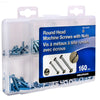When it comes to maintaining, repairing, or upgrading household appliances, understanding the importance of specific components plays a crucial role in ensuring their optimal performance and longevity. These essential elements, often referred to as appliance parts, are vital for the smooth operation of everyday devices such as refrigerators, washing machines, dishwashers, and ovens. Having access to the right parts can significantly extend the lifespan of your appliances and help you avoid costly replacements. Whether you are a homeowner seeking replacements for worn-out elements or simply interested in learning how appliances function internally, gaining insight into these components allows for better troubleshooting and more informed decisions during repairs. Knowing which parts are responsible for key functions not only facilitates quick fixes but also contributes to safer and more energy-efficient appliance use. As technology advances, the variety and complexity of these parts continue to grow, making it essential for consumers to stay informed about their options and ensure they select genuine, high-quality components.
Understanding Appliance Parts: A Beginner's Guide
For many homeowners and everyday users, appliances like refrigerators, washing machines, ovens, and dishwashers have become essential parts of daily life. Behind the smooth operation of these devices lies a complex network of components working in harmony. Gaining a basic understanding of these components can empower users to troubleshoot minor issues, better maintain their appliances, and make more informed decisions about repairs or replacements. This guide aims to introduce beginners to the core concepts of these vital elements, emphasizing their importance, the variety of common types, and how they collaborate to keep appliances functioning efficiently.
Core Components as the Heart of Functionality
Every appliance is built around fundamental parts that perform specific roles, such as motors, heating elements, or pumps. These core components are responsible for the primary operations—such as spinning a drum, heating water, or circulating air—that define the appliance’s purpose. For example, the motor in a washing machine makes the drum spin, while a heating coil in an oven ensures proper cooking temperatures. Recognizing these key parts helps users understand how appliances work and what might need attention if they malfunction.
Replacement Parts Ensuring Longevity and Performance
Over time, some parts may wear out or become faulty, leading to decreased efficiency or appliance failure. Having access to and knowledge about common replacement components—like belts, filters, or switches—can significantly extend the lifespan of household appliances. For instance, a clogged lint filter in a dryer reduces
Common Appliance Parts and Their Functions
When it comes to maintaining and repairing household appliances, understanding the key components behind their operation can be immensely helpful. Recognizing the roles and signs of wear in these everyday parts can not only extend the lifespan of your appliances but also ensure they function efficiently. Whether you're a homeowner looking to troubleshoot minor issues or simply interested in how your devices work, knowing the most frequently encountered elements and their functions provides valuable insight into appliance care.
Motors: The Powerhouses of Appliances
Motors are essential for converting electrical energy into mechanical motion. They are commonly found in appliances such as washing machines, vacuum cleaners, and refrigerators with motorized components. The function of a motor is to drive movement—whether it’s spinning a drum, powering a fan, or operating a compressor. Over time, signs of motor wear include unusual noises, overheating, or a noticeable loss of power. Recognizing these indicators early can prevent more extensive damage and costly repairs. In many appliances, replacing a faulty motor involves professional expertise, but understanding its significance remains crucial for overall appliance maintenance.
Belts: The Connectors of Mechanical Motion
Belts are flexible loops typically made of rubber or other durable materials that transfer motion from one part of an appliance to another. They are found in washing machines, dryers, and some vacuum cleaners. Their main function is to transmit power efficiently, ensuring the connected components operate smoothly. Over time, belts can become frayed, cracked, or
Tips for Maintaining and Replacing Appliance Parts
Maintaining your household appliances not only ensures their longevity but also helps prevent unexpected breakdowns and costly repairs. Understanding how to care for your appliances and recognizing when parts might need attention can save you time, money, and inconvenience. Whether you're a homeowner looking to keep your appliances in good shape or someone unfamiliar with repair procedures, these practical tips will guide you through the essentials of maintenance and replacement, emphasizing safety and efficiency in every step.
Regular Cleaning and Inspection:
Keeping appliances clean and routinely inspecting their components can significantly extend their lifespan. Dust, dirt, and debris can accumulate over time, affecting the performance and durability of internal parts. For example, cleaning refrigerator coils-and addressing buildup on vents and filters—including those in air conditioners or dryers—can improve efficiency and reduce strain on the system. During inspections, look for visible signs of wear, corrosion, or damage such as cracks, rust, or loose connections. Addressing minor issues early can prevent more serious damage later, making this an essential, cost-effective maintenance step.
Proper Usage and Handling:
Using appliances according to manufacturer instructions is crucial for their longevity. Overloading washer drums, misusing dishwasher detergents, or setting incorrect temperatures in ovens can cause undue stress on internal components, leading to premature wear. For instance, consistently overloading a washing machine can strain the motor and suspension system, while using the wrong filter or detergent disrupts the appliance's operation. Handling parts
In summary, exploring the intricate world of appliance components reveals a fascinating array of parts that work harmoniously to keep household systems functioning smoothly. Understanding the basic functions and identifying common components not only demystifies the repair process but also empowers homeowners to make informed decisions about maintenance and replacement. By following essential tips for care and timely updates, users can extend the lifespan of their appliances, ensuring efficiency and reliability over time. Ultimately, a well-informed approach to these vital elements fosters a greater appreciation for the engineering behind everyday appliances and encourages proactive management, leading to cost savings and enhanced performance.







